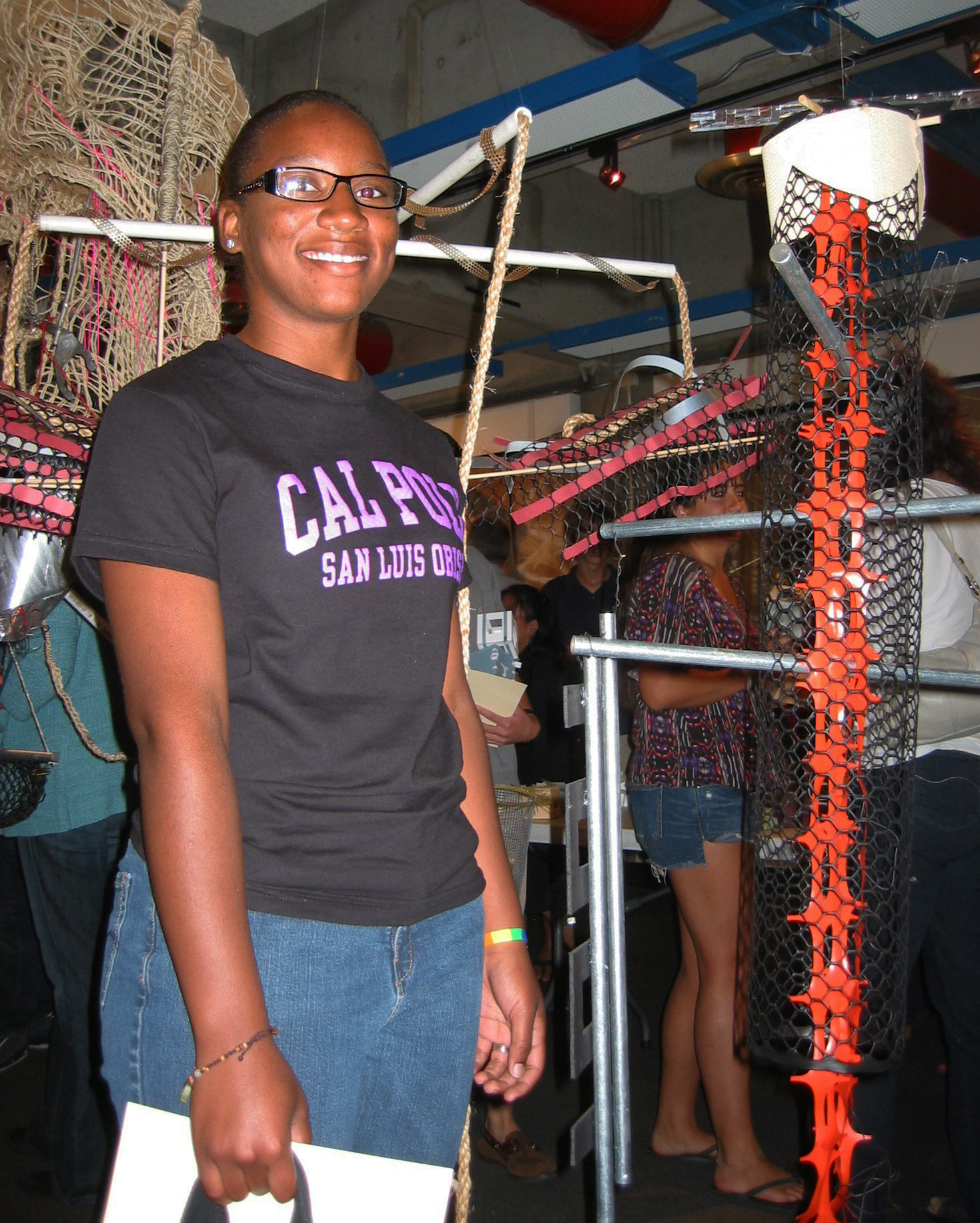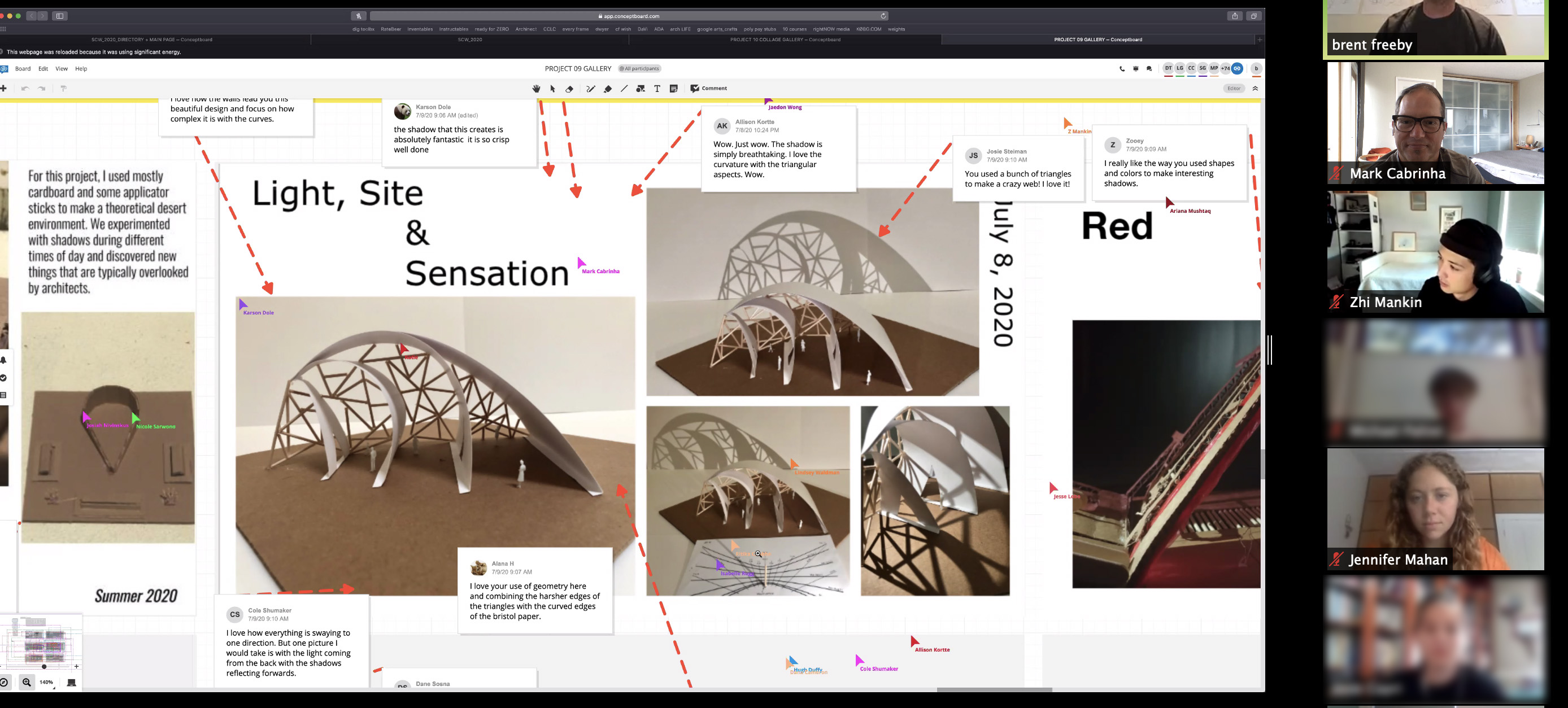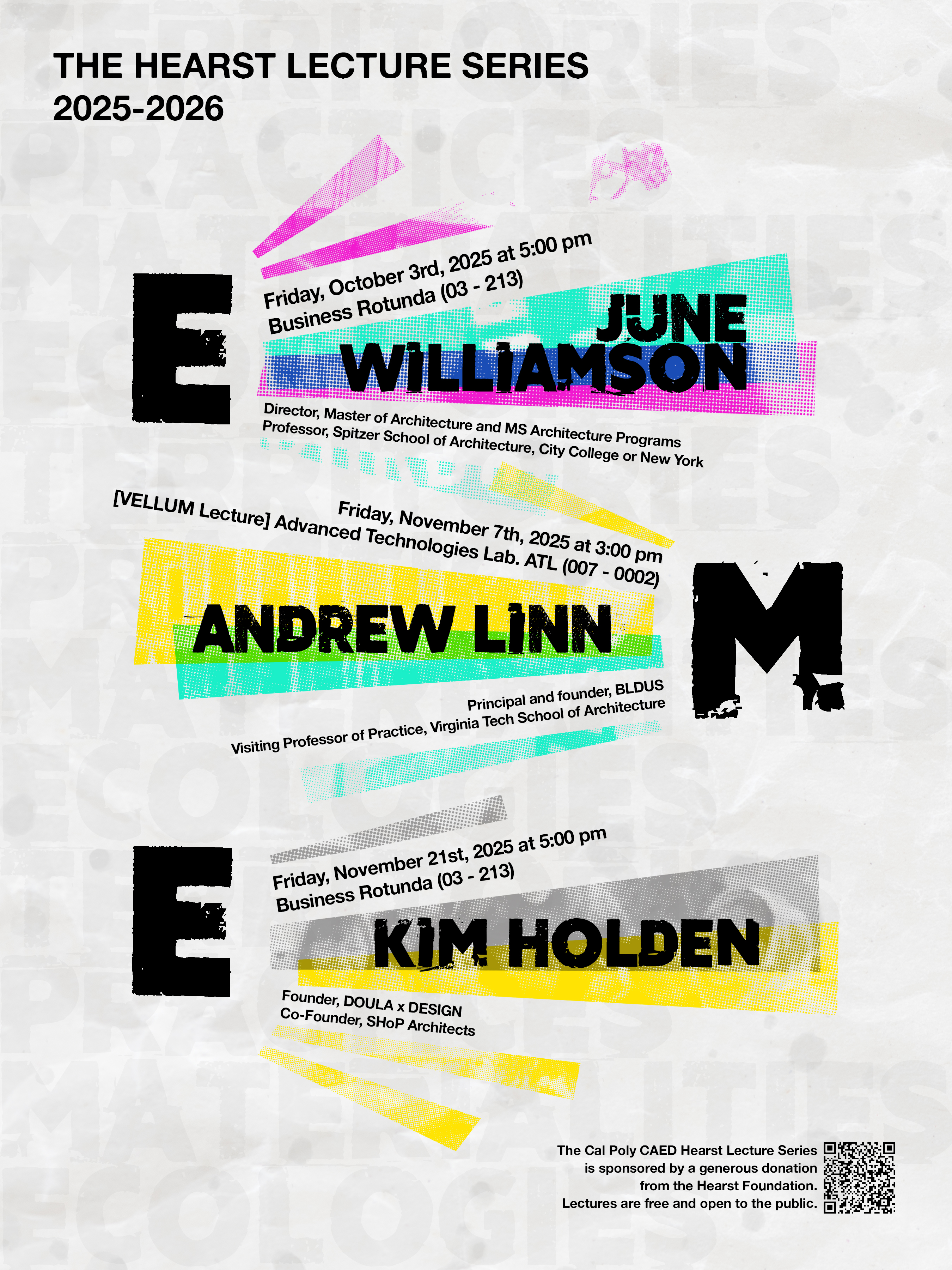
Exploring Three Perspectives within the CAED / Architecture Summer Career Workshop
By Grace Burnite (Business Administration ’21)

Each year, Cal Poly’s College of Architecture and Environmental Design (CAED) offers the Architecture Summer Career Workshop to rising juniors and seniors in high school to help students discover if careers in the fields of planning, design, engineering or construction are a good fit. The workshop, led by CAED faculty, and assisted by recent architecture graduates, gives students opportunities to explore spatial and design thinking, work on physical modeling projects, and learn how to create a portfolio through a series of projects. Though traditionally the workshop has been an immersive, 4-week in-person experience that provided students housing on Cal Poly’s campus, the workshop was reinvented as a remote program for the summers of 2020 and 2021 due to COVID-19.
But either remotely or in-person, one thing has stayed the same for decades: the program helps build a bridge to the future, and not just for the high school students who attend.
Finding the Spark for Teaching
The summer after Trent Fredrickson graduated from the CAED with an architecture degree in 2013, he became one of three teaching associates for the Architecture Summer Career Workshop.
During that time, he provided mentorship to nearly 20 students and helped facilitate the curriculum that CAED associate dean and director of the program Mark Cabrinha had developed for the students. It was Fredrickson’s first real teaching experience.
One of the most memorable assignments from that time involved students building a model that was suspended in the air by a string that hung from the ceiling, he recalled.
“Students were challenged to work intuitively and quickly,” Fredrickson said, adding that the materials they were given included things like paper, orange safety fencing and wooden dowels. “The assignment allowed students to experiment with compositional qualities of 3-dimensional form making and forced them to think about how to attach pieces without the conventional model base, or ground, that they might typically have.”

Student at the 2013 workshop exhibition proudly stands next to the 3-dimensional form she created.
But the experience came with challenges of its own. One of them: the young students were hoping to find the exact right answer for a variety of problems — even though, in design school, there can be multiple correct answers.
“I had to realize as a young teacher that my role was to help them break away from trying to impress the teacher with the right answer,” Fredrickson said. “You’re trying to get the students to think critically but also formulate an opinion on their own.”
Teaching associates like Fredrickson help set the tone for collaboration in the workshop and give crucial one-on-one feedback to the students.
“You need to think very intentionally about how you deliver information to the students and how you engage them without merely telling them what a particular concept is,” he said. “It’s really about opening up conversation for students and getting them to start discovering on their own by doing exercises rather than being told what to do.”
After that first summer as a teaching associate, Trent worked at architecture firms in Los Angeles and San Francisco, and went on to attend graduate school at Harvard and receive a post-professional master of architecture degree in the spring of 2020.
Throughout that time, Fredrickson continued to stay connected to the CAED and pursue his passion for teaching. Thanks to the currently remote nature of the workshop, he has been able to teach a virtual second-year studio this year while still living on the East Coast.
“It certainly helped introduce me to the idea of being a teacher and made me think about teaching as a longer career trajectory,” Fredrickson said. “I would recommend being a teaching associate for the workshop to any current Cal Poly architecture students interested in teaching. “I think it’s a good introduction to teaching in general.”
Learning to Fail — And Think Critically
Fourth-year architecture student Chineme Maduno attended the Architecture Summer Career Workshop as a high school student in 2016. The Redondo Beach native knew she was interested in applying to an architecture program for college, but attending the workshop confirmed her desire to pursue architecture at Cal Poly.
“My high school didn’t really have any architecture classes. I learned that doing summer workshops at colleges was a really good way to get exposure to these classes,” Maduno said, adding that her history teacher told her about the good architecture program at Cal Poly, which inspired her to attend the workshop.
During her experience, Maduno got a taste of what her first year of college would be like, both in and outside of the classroom.
“The workshop is very similar to your first year, where you’re doing more conceptual design,” she said. Her favorite project during the workshop? Their final one: a house development project.

During the 2016 workshop exhibition a student shares insight about a house within the larger community of student projects.
Maduno enjoyed the experience of living in the dorms as well.
“I loved any event the RAs had for us, whether it was going to the farmers market downtown or putting on events at the dorms,” she said. “This was my first time living in the dorms and I really liked the community aspect of the college.”
Once Maduno enrolled in the CAED, she decided to become an RA (resident advisor) for the summer workshop as a way to stay connected with the college and provide students with the same memorable experience she had.
“The workshop was mostly centered around the creative process and just trying out any idea I had without being concerned if it would work out in the end,” she said. “It showed me that it’s normal to fail often. I just had to keep putting in effort, see what the outcome was, and decide whether I liked it or not.”
Finding a Virtual Path Forward
When workshop director and professor Mark Cabrinha started teaching in the workshop in 2004, it was just the latest step in his history with the workshop. Cabrinha, who took over as director in 2008, also attended the Architecture Summer Career Workshop when he was in high school and served as a teaching associate in the workshop after he graduated from Cal Poly’s architecture program. It was an experience that sparked his interest in teaching.
When the pandemic forced the workshop to be offered remotely for the first time last summer, Cabrinha and the faculty team were challenged to rethink how they could effectively teach the workshop virtually.
“The core principle of the workshop is developing spatial and material sensibility through physical modeling. We were not going to change that,” Cabrinha said. “If students had the right scaffolding and support for projects, we knew that students could do this on their own.”
A software platform called Conceptboard helped fill in a few gaps. The software is a virtual collaborative space where students could upload photos of their projects and post comments to maintain the peer-to-peer studio culture. Students took photos on their cell phones and placed them in a portfolio that helped tell the story of the student’s perception of the physical model.

Screenshot of a project review underway using Conceptboard software during a Zoom session with Associate Dean Mark Cabrinha (shown on upper right).
“We talk about not just how to take a photo but also who the photograph is for and the role of the observer,” Cabrinha said. “We aren’t just showing this as a model that students made; we are positioning someone inside of that model. That’s a really important lesson that we weren’t able to emphasize as much in the face-to-face workshop.”
The lessons learned from summer 2020 will help to improve the workshop for years to come. In addition to the curriculum improvements, the remote version was more accessible for students who might not otherwise have the chance to attend.
“The point of success for me was seeing the same joy, curiosity and sense of pride in students at the end of the remote workshop that we see at the in-person workshop.”
As a leading school of the built environment, the CAED strives to help the next generation succeed in exploring career opportunities through the workshop and to prepare them to be engaged citizens who participate in shaping their communities.
The cost to attend the workshop can be a barrier for some students, but it doesn’t have to be. A limited number of scholarships are available for students who qualify for the Federal Free and Reduced Lunch Program. Help us offer scholarships for 10 students. A gift of $2,500 would make Learn by Doing possible for more students. With this generous support, students from diverse communities can learn from our leading faculty.
If you would like to support the Architecture Summer Career Workshop, donations in any amount can be made online by clicking this secure giving link.
View more information here about Cal Poly’s Architecture Summer Career Workshop, including registration for the 2021 session.



